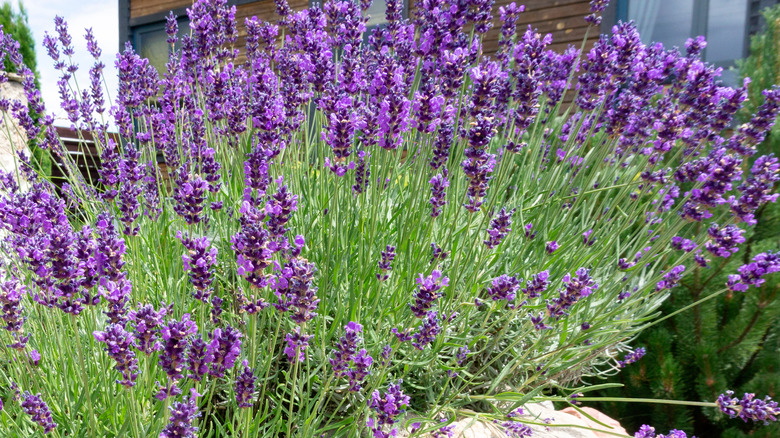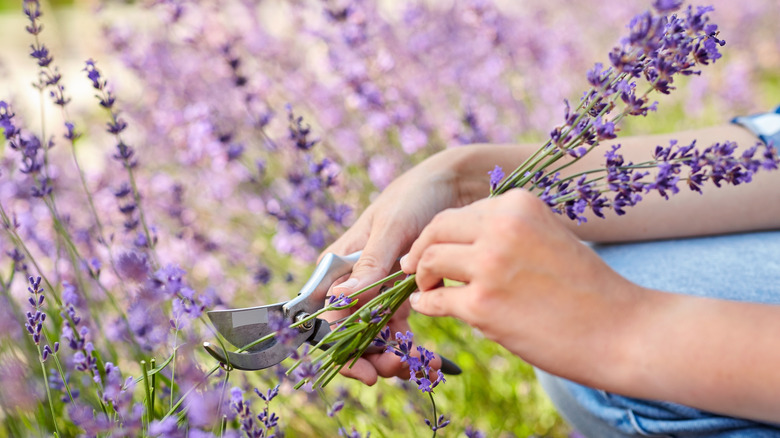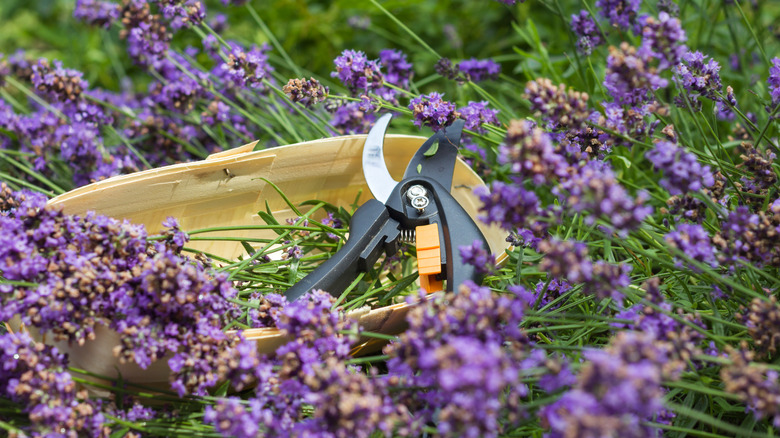The Best Time Of Year To Deadhead Lavender
One of the best parts about growing lavender is harvesting the flowers. Deadheading this fragrant bloom is best done right after the flowers have finished growing to their full potential. This is usually in the late spring or early summer, though it can vary depending on the specific lavender variety and where you are in the world. Depending on the variety, deadheading in late summer is the recommended time frame. When you deadhead lavender consistently throughout the blooming season, not only will you enjoy more beautiful blooms that have a longer lifespan, but you'll also keep the plant healthy and compact. Without deadheading, lavender plants can develop a woody base that is prone to splitting, which not only derails the overall appearance but can reduce its lifespan.
It's important to note that lavender plants often have a second flush of flowers that occurs later on in the summer. This is especially true if you do the initial deadheading in the late spring. In this case, you can repeat the deadheading process once the second round of blooms has faded, which will encourage a potential third flower bloom.
How to deadhead lavender
Deadheading lavender is simple and only requires a few garden tool essentials. You'll want a pair of sharp pruning shears or hedge shears and a container to hold the flowery bounty. It's important to make sure you start off with clean and sanitized tools to reduce the chance of transmitting diseases between your plants. Start by locating the flower at the top of the stem, and then run your finger along the stem until you reach a set of leaves. Take your shears and cut just above the first set of leaves or nodes. Repeat this process for each stem with a spent flower. By getting rid of the dying flowers, you stop the plant from wasting energy on producing seeds and make it focus on new flowers and lateral shoot growth instead. The removal of the spent flowers also helps maintain the plant's overall appearance by preventing it from becoming leggy.
After deadheading the spent stems, you can spread them out in a shaded area to dry. This ensures that the flowers stay fragrant. Once dried, the flowers can then be used to create sachets or fill jars, providing you with homemade indoor air fresheners. The pleasant scent of lavender will infuse the air, creating a refreshing and soothing atmosphere in your home.
Deadheading versus pruning
Pruning and deadheading are two distinct practices that serve similar but different purposes. Pruning is done for maintenance and shaping and involves the removal of branches and flowers. It is timed during specific periods and involves more extensive plant removal, which promotes new growth and gives the plant a better shape. Deadheading focuses on removing spent flowers or seed heads and can be done throughout the blooming season to encourage new blooms without any major impact on the plant. It's best to prune your lavender plants in mid-spring.
To prune, trim each stem back by up to a third, taking off the flowers and some green stem growth. It's important to leave a good amount of green on your plants, so practice caution and don't cut near the woody base. Aim for an even dome shape by leaving longer stems in the middle and gradually making them shorter towards the outer edges of the plant. You'll have a second bloom after trimming, and once these have finished, you can prune them in the same way.


